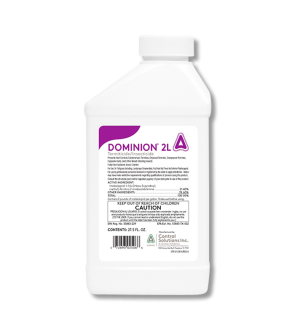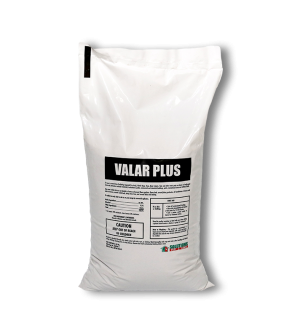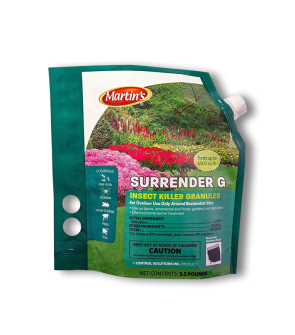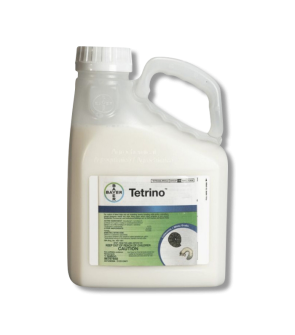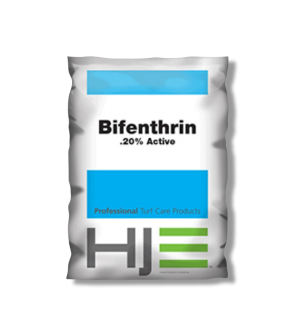Billbug Control
Most Effective Products
Billbug Control: How to Get Rid of Billbugs
This article is a general Billbug control guide. Using the products and methods suggested will help you to completely control Billbug populations. Follow this DIY guide and use the recommended products and we guarantee 100% control of Billbugs.
There are several species of billbugs, but the most common one found in lawns is the bluegrass billbug. While billbugs are most commonly found in cool-seasoned lawns like Kentucky Bluegrass they can live within warm-seasoned lawns like Bermuda or zoysia. Billbugs that live within warm-seasoned lawns are mainly the hunting billbugs.
Out of all the species of billbugs, the bluegrass or hunting billbugs are the most encountered pests from the sphenophorus parvulus category. Unfortunately, since billbugs are most sporadic within the warmer months like spring or summer they can be mistaken for drought or lawn diseases such as dead spot. Not only can they damage your lawn, but they can attract predators such as skunks that damage grass when digging to feed on billbugs.
As a weevil, also known as the Snout Beetle, they will feed on the stems of turf grass, usually above the crown or sheath to create a direct feeding path for their larvae. At the same time, the female billbug will lay up to 5 eggs per day during her feeding activity. Between 3 to 10 days, the larvae will hatch and tunnel within the stem of your turf to feast on the turf's roots for a period of two weeks. During this period, the billbug larvae will feed on the crown or stem of the turf.
If left untreated, billbug populations can quickly increase and render a yard completely useless or unaesthetically pleasing within a matter of days. For turfs experiencing these unwanted pests our DIY guide will present vital information and fast elimination methods through our professional products and advice.
Identification
Before proceeding with treatment, you will need to be certain that the type of pest infestation you have is a species of billbug. Careless identification can lead you to using the wrong or ineffective insecticides, which can be a waste of your time and finances. While billbug species will vary in some of their features they will share some distinguishing traits.

- The color of an adult billbug will range between gray, black, or brown: all will usually have a pitted or spotted texture. In their larvae form, they will be white or cream colored with no legs and have a brown head capsule. However, they should not be confused with other species of grubs. To easily identify billbug larvae look at their legs. Billbug larvae will not have legs whereas other species of grubs do.
- The pitted or spotted texture of hunting billbugs will form a V shape whereas bluegrass billbugs will have no specific pattern.
- When fully matured, billbugs will measure from 1/4 to 1/16 inches. The hunting billbug is slightly larger than the bluegrass billbug.
- Billbugs, also called weevils or snout beetles get their name from their long, curved and narrow-like snout protruding from their head.
- Adult billbugs do have a set of wings, but they rarely fly and are often slow moving. When disturbed, billbugs will play dead like possums until they are sure the danger has passed.
Use the image and description above to help you correctly identify a billbug. If you are unsure of the pest inhabiting your turf, contact us with either a photo or sample of the insect in a ziplock bag or plastic container.
Inspection
Once you have confirmed billbugs on your property, you can proceed to the next phase of the control treatment which is inspection. While it may sound simple, inspection is a important process that helps to determine where to apply your products and avoid unnecessarily using them thus helping to increase maximum elimination and cost.

Where to Inspect
Billbugs are a turf invading pests that primarily feed on various types of warm-seasoned and cool-seasoned grasses and crops. Adulticide billbugs will overwinter in leaf litter, thatch, crack and crevices in your yards soil and driveway, within the ornamental foliage around your homes foundation, or other sheltered areas of your turf that cannot easily be reached.
As a slow moving pest, adult billbugs can be seen on your driveway or sidewalk from late spring (April) to summer (from May to July) as they travel across your property looking for areas to lay their eggs.
What to Look For
Adult billbugs will feast on the the top layer of turf near the foliage's stems to lay their eggs. Due to their chewing activity, you will witness small piles of white, sawdust-like material around the base of the plant or on the surface of the turfs leaves. The billbug's larvae will feast from within near the crown area of the plant and underneath or near the turfs root zone.
Both the larvae and adult billbug activities will create injury to your turf creating wilting, yellow to brown discoloration, and scattered barren patches across your yard. If there is an extensive population of billbugs in your turf then your yard will appear barren or may be permanently dead.
To determine if you have a billbug infestation, you may need to dig a hole about 3 inches deep to examine if there are white, curved larvae within the soil. If you notice several white larvae within your soil then a prompt treatment is recommended.
Treatment
Once you have confirmed the billbug and the areas of infestation it is time to begin the treatment step. Before proceeding, make sure you have on the appropriate personal protection equipment (PPE) such as gloves, mask, safety googles or glasses, long-sleeve shirt, long-sleeve pants, coveralls, and closed-toe shoes with socks.
The best method of control for billbug populations is to begin prior to their egg laying activity in early May. Controlling hatched larvae with insecticides is often difficult since they are protected from living within the foliage and several inches below the soil.
Watering your turf several days before application can help to draw billbug larvae to the surface which will help to increase your products contact with the pests. Our recommendation is to use a insecticide product containing imidacloprid, bifenthrin, or beta-cyfluthrin to effectively eliminate billbug populations.
Step 1: Mow

As mentioned previously, female billbugs will lay their eggs in chewed holes within the turf's stem near its the base from late April to July. During these periods, you will want to mow your yard when it has reached its appropriate height.
Typically, most species of turf are recommended to mow once they reach a height of three inches or more. Mowing to short can scalp your lawn or create stress to the grass. Lawns during the summer are normally more weaker since they face drought and are beginning to store nutrients for the upcoming fall season.
By maintaining your lawns height you can help to reduce ideal habitats for billbugs and help to increase your lawns appearance by stimulating its growth. Decomposed grass clippings can still be a suitable habitat for billbug eggs so it is best to properly remove them from your yard by raking.
Step 2: Treat Your Yard with Valar Plus Bifenthrin Granules

Valar Plus Bifenthrin Granules is a recommended product to use in combination with Dominion 2L. As the name suggests, Valar Plus Bifenthrin Granules is a granular insecticide that treats various turf invading pests, including billbugs. This bifenthrin-based pesticide has the ability to last within your turf for up to 3 months to prevent billbug infestation and fight against current populations.
We recommended using a push spreader to apply Valar Plus Bifenthrin Granules across your yard at a rate of 1.15 to 2.3 lbs. of product per 1,000 sq. ft. of lawn.
To determine how much Valar Plus Bifenthrin Granules to use you will need to calculate the square footage of your treatment area. To do this measure the length and width of the treatment area in feet and multiplying them together (length X width = square footage).
Once you have determine how much product to use, you will load your spreader with the proper amount of Valar Plus Bifenthrin Granules. Begin by walking in a straight, parallel line across your treatment area in a back and forth motion until you have evenly covered the area.
Once Valar Plus Bifenthrin Granules has been applied, it will need to be watered in with no more than 0.1 inches of water to activate the insecticide.
Step 3: Spray Dominion 2L Insecticide onto Turf

Dominion 2L is a neonicotinoid insecticide that works systemically to kill larvae feeding on your turfs roots as well as eliminating adulticide billbugs. The active ingredient in this product is imidacloprid 21.4%, which works to inhibit the insects central nervous system leading to paralysis and eventual death.
To apply Dominion 2L, you will need to use a hose-end sprayer for large-scale areas. Determine how much Dominion 2L to use by calculating the square footage of your treatment area. To do this, you will measure in feet and multiply the areas length and width together (length X width = square footage).
Billbugs should be treated at a rate of 0.46 to 0.6 fl. oz. of Dominion 2L in a gallon of water per 1,000 sq. ft. For best results, apply Dominion 2L prior to egg hatch of billbugs. The active ingredient in Dominion 2L has enough residual activity so that when eggs hatch the larvae will come into contact with the spray solution.
Attach the sprayer to the end of your garden hose and secure the connection to prevent leakage. Fill the sprayer with the appropriate amount of Dominion 2L and then start to spray from the back of your lawn to the front.
You will also want to spray over the areas treated with Valar Plus Bifenthrin Granules and on the top and bottom of ornamental and turf leaves. Remember that Dominion 2L is not meant for plants meant for consumption such as fruit or nut trees or re-sale like grass grown for seed.
Prevention
After the billbugs have been eliminated from your yard, it is important to implement some preventative measures to ensure these pests do not return. Listed below are several preventative measures you should take to fight against future reinfestations.

- Start by beginning an early preventative program against billbugs and their larvae with an application of Valar Plus Bifenthrin Granules and Dominion 2L in April.
- Rake or dethatching your lawn to disturb egg-laying sites or any potential mating activity. Besides deterring billbugs it will help to strengthen your turfs roots by improving air and nutrient flow throughout the soil.
- Trim your yards turf when a height of three inches or more has been reached. During the spring months, this can be seen as mowing once a week, but is subjected to change during the summer when turf is starting to become stressed.
- Water your lawn with at least an inch of water early in the morning to strengthen your turfs roots and draw larvae closer to the surface for liquid insect applications.
- Reapply Dominion 2L once 90 days have passed for continued protection against billbugs.
Key Takeaways
What are Billbugs?
- Billbugs are an invasive and destructive turf insect that can cause severe damage to residential and commercial lawns within a short time frame. From an early larvae stage to adulticide insect they feast on the top and bottom layer of foliage. Typically, they invade your yards turf, but can infest ornamental plants and agricultural areas containing crops.
How to Get Rid of Billbugs?
- To treat your yard for billbugs, we recommend using a combination of Dominion 2L and Valar Plus Bifenthrin Granules to fight against larvae underneath your turf and matured billbugs traveling across your yard. For best results, water the turf within your yard several days before application to make the roots more appealing to larvae and make travel easier for them. As a result, larvae will come into closer contact with liquid insecticides such as Dominion 2L.
How to Prevent Billbug Reinfestation
- Prevent a reinfestation of billbugs with regular watering, mowing, and early application of Dominion 2L and Valar Plus Bifenthrin Granules in April to promote healthy turf and fight deter these pests from coming into your property.

